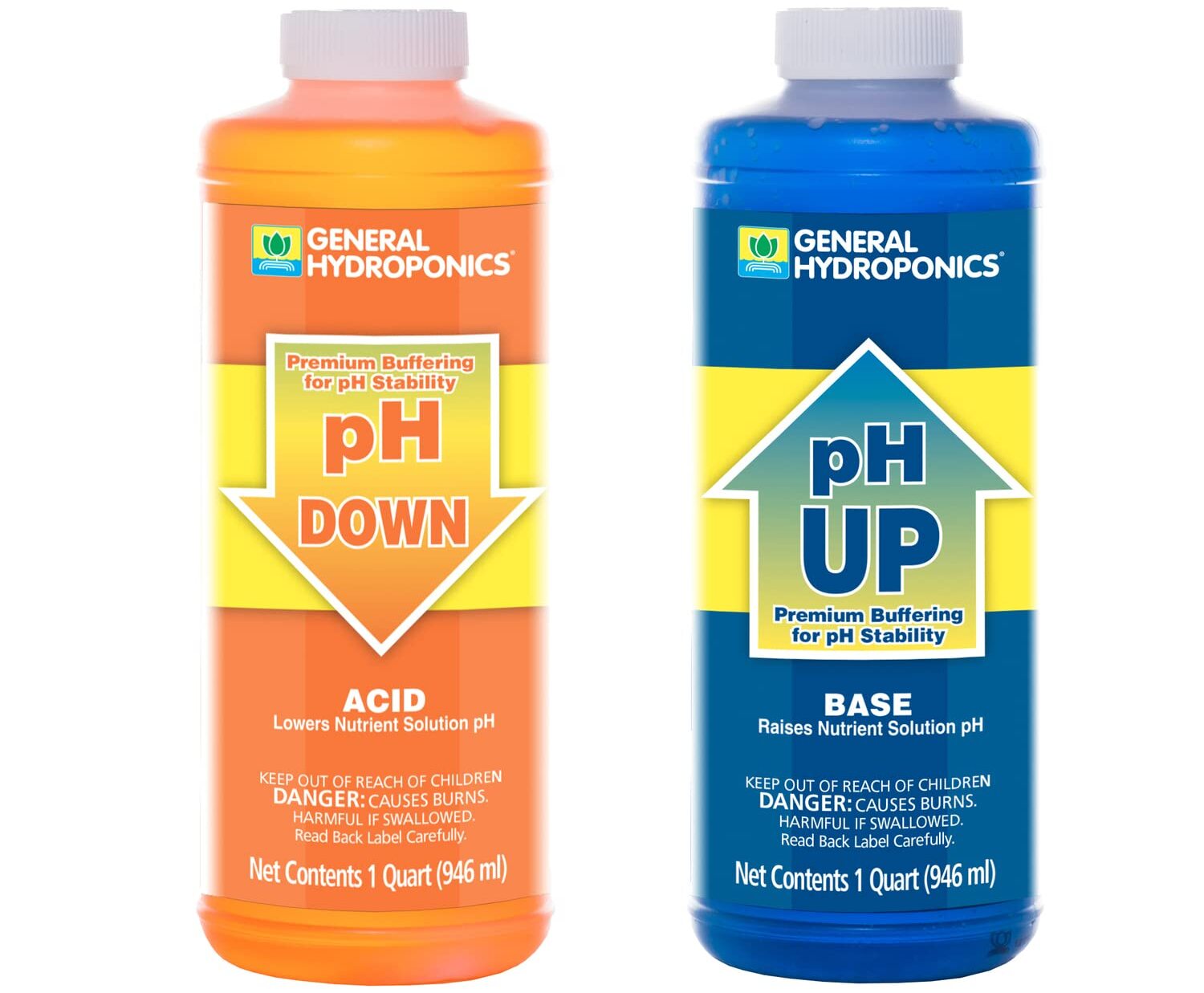Home>Gardening Basics>Understanding Soil>How To Bring Down PH In Soil


Understanding Soil
How To Bring Down PH In Soil
Published: February 4, 2024
Learn how to understand soil and bring down pH in soil with our expert tips and techniques. Improve your gardening and plant health today!
(Many of the links in this article redirect to a specific reviewed product. Your purchase of these products through affiliate links helps to generate commission for Chicagolandgardening.com, at no extra cost. Learn more)
Table of Contents
**
Introduction
**
Understanding the importance of soil pH and how to manage it effectively is crucial for successful gardening and agriculture. Soil pH, a measure of the acidity or alkalinity of the soil, plays a pivotal role in the availability of essential nutrients to plants. In this article, we will delve into the intricacies of soil pH and explore various methods to bring down the pH in soil.
Maintaining the correct pH level in soil is vital for plant health and growth. While some plants thrive in slightly acidic soil, others require a more alkaline environment. Understanding the specific pH requirements of the plants you are cultivating is essential for achieving optimal yields and vibrant, healthy foliage.
By gaining insights into the factors influencing soil pH and learning how to adjust it to suit specific plant needs, gardeners and farmers can foster a thriving and productive growing environment. Whether you are a seasoned horticulturist or a novice gardener, mastering the art of managing soil pH can significantly impact the success of your cultivation endeavors.
Throughout this article, we will explore the intricacies of soil pH, the methods for testing it, and the various organic and chemical approaches available to lower soil pH. By the end of this comprehensive guide, you will be equipped with the knowledge and practical know-how to effectively manage and optimize soil pH for your specific planting needs. Let's embark on this enlightening journey into the world of soil pH management and cultivate a deeper understanding of this fundamental aspect of successful gardening and agriculture.
Understanding pH in Soil
Soil pH is a measure of the soil’s acidity or alkalinity, determined by the concentration of hydrogen ions in the soil solution. The pH scale ranges from 0 to 14, with 7 considered neutral. Values below 7 indicate acidic soil, while values above 7 indicate alkaline soil. Most plants thrive in soil with a pH ranging from 6 to 7, slightly acidic to neutral.
The pH level of soil significantly influences the availability of essential nutrients to plants. For instance, acidic soils often have higher concentrations of aluminum and manganese, which can be toxic to plants, while alkaline soils may limit the availability of nutrients such as iron, phosphorus, and zinc. Understanding the pH requirements of specific plants is crucial for ensuring optimal nutrient uptake and overall health.
Factors influencing soil pH include parent material, climate, vegetation, topography, and human activity. Parent material, such as the rocks and minerals from which the soil is derived, plays a significant role in determining initial soil pH. Climate and vegetation can also impact soil pH, with regions experiencing higher rainfall typically having more acidic soils due to leaching of basic cations.
Testing soil pH is essential for understanding the current state of the soil and making informed decisions about necessary amendments. Various methods, such as using pH testing kits or digital pH meters, can provide accurate readings of soil pH. Once the pH of the soil is known, appropriate steps can be taken to adjust it to the desired level for specific plants.
By comprehending the intricacies of soil pH and its impact on plant growth, gardeners and farmers can tailor their cultivation practices to create an optimal growing environment. In the following sections, we will explore the methods for testing soil pH and the techniques for lowering soil pH using both organic materials and chemical amendments.
Testing Soil pH
Accurately determining the pH of soil is a fundamental step in understanding its suitability for specific plants and identifying any necessary amendments. There are several methods available for testing soil pH, each offering unique advantages and varying levels of precision.
One of the most common methods for testing soil pH is using pH testing kits, which typically include a test tube, testing solution, and a color chart. To conduct the test, a soil sample is mixed with the testing solution, and the resulting color is compared to the chart to determine the pH level. While pH testing kits are affordable and easy to use, they may provide less precise results compared to digital pH meters.
Digital pH meters offer a more advanced and accurate means of testing soil pH. These devices utilize an electrode to measure the hydrogen ion activity in the soil solution, providing a digital readout of the pH level. Digital pH meters are particularly beneficial for users requiring precise pH measurements and are often favored by professional growers and agricultural experts.
An alternative method for testing soil pH involves utilizing pH test strips. These strips are coated with chemicals that change color in response to the soil’s pH level. While pH test strips are convenient and easy to use, they may not offer the same level of accuracy as other testing methods.
When collecting soil samples for pH testing, it is essential to obtain representative samples from various locations within the planting area. This ensures a comprehensive understanding of the soil’s pH variability, allowing for targeted pH adjustment based on specific plant requirements.
By employing reliable testing methods, gardeners and farmers can gain valuable insights into their soil’s pH characteristics and make informed decisions regarding soil management and plant selection. In the subsequent sections, we will explore the practical approaches for lowering soil pH using organic materials and chemical amendments, empowering readers to optimize their soil pH for successful cultivation.
Using Organic Materials to Lower Soil pH
Organic materials offer a natural and sustainable approach to lowering soil pH, making them an appealing choice for environmentally conscious gardeners and farmers. Incorporating organic amendments into the soil not only helps to adjust pH levels but also enhances soil structure and fertility, promoting long-term plant health and vitality.
One of the most widely used organic materials for lowering soil pH is elemental sulfur. When elemental sulfur is added to the soil, it undergoes a biological oxidation process, facilitated by soil microorganisms, to form sulfuric acid. This acidification process gradually lowers the soil pH, making it more suitable for acid-loving plants such as blueberries, azaleas, and rhododendrons.
Another organic material commonly employed to lower soil pH is pine needles or pine bark. These acidic organic materials release organic acids as they decompose, gradually acidifying the soil. Incorporating pine needles or pine bark as a mulch or incorporating them into the soil can effectively lower pH levels over time, creating a favorable growing environment for acid-loving plants.
Peat moss, renowned for its ability to improve soil structure and moisture retention, also exhibits acidic properties that can lower soil pH. When incorporated into the soil, peat moss not only enhances soil acidity but also contributes to overall soil fertility, making it a valuable amendment for acidifying soil while improving its physical properties.
Coffee grounds, a byproduct of coffee brewing, can be utilized as an organic amendment to lower soil pH. Coffee grounds are rich in organic acids, such as chlorogenic acid, which can gradually acidify the soil as they decompose. Incorporating coffee grounds into the soil or using them as a mulch can contribute to lowering pH levels while providing additional organic matter to the soil.
By leveraging these organic materials, gardeners and farmers can effectively lower soil pH while enriching the soil with beneficial organic compounds. These natural approaches not only promote sustainable soil management but also contribute to the overall health and vigor of cultivated plants. In the subsequent section, we will explore the use of chemical amendments to lower soil pH, providing readers with a comprehensive understanding of the available options for pH management in soil.
Using Chemical Amendments to Lower Soil pH
Chemical amendments offer a rapid and precise method for lowering soil pH, providing an efficient solution for addressing alkaline soil conditions and creating an optimal growing environment for acid-loving plants. While organic materials gradually lower soil pH over time, chemical amendments can produce more immediate results, making them particularly beneficial for time-sensitive cultivation needs.
One of the most commonly used chemical amendments for lowering soil pH is agricultural sulfur, often available in the form of finely ground elemental sulfur. When applied to the soil and incorporated through cultivation or irrigation, elemental sulfur undergoes oxidation processes, generating sulfuric acid that effectively reduces soil pH. Agricultural sulfur is available in various formulations, offering flexibility in application methods and rates to suit specific soil conditions and plant requirements.
Another chemical amendment employed to lower soil pH is aluminum sulfate. This water-soluble compound reacts with soil moisture to produce acidity, effectively lowering soil pH levels. Aluminum sulfate is particularly useful for rapidly acidifying soil and is often utilized in horticultural and agricultural settings to create suitable growing conditions for acid-loving plants.
Iron sulfate, a water-soluble salt, also serves as a valuable chemical amendment for lowering soil pH. Upon application, iron sulfate dissolves in soil moisture, releasing iron ions and sulfuric acid. This dual action not only contributes to soil acidification but also provides essential iron nutrients to plants, making it a versatile amendment for addressing alkaline soil while enhancing plant vitality.
Acidifying fertilizers, such as ammonium-based fertilizers, can also be utilized to lower soil pH while providing essential nutrients to plants. Ammonium-based fertilizers, including ammonium sulfate and ammonium nitrate, undergo nitrification processes in the soil, producing acidic byproducts that effectively reduce soil pH. These fertilizers offer the dual benefit of soil acidification and nutrient provision, contributing to overall plant health and vigor.
By leveraging chemical amendments, gardeners and farmers can swiftly and precisely lower soil pH to create an optimal growing environment for a diverse range of plants. These targeted solutions provide flexibility and efficiency in managing soil pH, empowering cultivators to tailor soil conditions to meet the specific requirements of their chosen crops. As we conclude our exploration of soil pH management, readers are now equipped with a comprehensive understanding of the organic and chemical approaches available for effectively lowering soil pH.
Conclusion
Understanding and managing soil pH is a fundamental aspect of successful gardening and agriculture. The pH level of soil significantly influences the availability of essential nutrients to plants, thereby impacting their overall health and productivity. By comprehending the intricacies of soil pH and employing effective management strategies, gardeners and farmers can create optimal growing environments tailored to the specific needs of their cultivated plants.
Through the exploration of organic and chemical approaches for lowering soil pH, readers have gained valuable insights into the diverse methods available for pH management. Organic materials, such as elemental sulfur, pine needles, peat moss, and coffee grounds, offer sustainable and natural solutions for gradually lowering soil pH while enhancing soil fertility and structure. These organic amendments not only promote long-term soil health but also contribute to the vitality of cultivated plants.
On the other hand, chemical amendments, including agricultural sulfur, aluminum sulfate, iron sulfate, and acidifying fertilizers, provide rapid and precise means of lowering soil pH, addressing alkaline soil conditions, and creating favorable growing environments for acid-loving plants. These targeted solutions offer flexibility and efficiency in managing soil pH, empowering cultivators to tailor soil conditions to meet the specific requirements of their chosen crops.
By incorporating the knowledge and practical know-how gained from this comprehensive guide, readers are now equipped to make informed decisions regarding soil pH management, ensuring the optimal growth and development of their cultivated plants. Whether cultivating a bountiful garden or managing extensive agricultural plots, the ability to adjust soil pH to suit specific plant needs is a valuable skill that can significantly impact the success of cultivation endeavors.
As we conclude this enlightening journey into the world of soil pH management, it is evident that the intricate balance of acidity and alkalinity in the soil plays a pivotal role in fostering thriving and productive growing environments. By harnessing the diverse methods and approaches for lowering soil pH, gardeners and farmers can cultivate vibrant, healthy foliage and achieve optimal yields, ultimately contributing to the advancement of sustainable and successful cultivation practices.





